Isalo National Park in Madagascar is a stunning destination for hiking enthusiasts and nature lovers. With its unique sandstone rock formations, and diverse wildlife, Isalo offers an unforgettable experience for those seeking adventure and exploration.
This guide to Isalo National Park will provide you with all the information you need to plan your trip to and hikes around this breathtaking area.
Disclosure: I only recommend products I would use myself and all opinions expressed here are my own. This post may contain affiliate links that at no additional cost to you, I may earn a small commission.
Background on Isalo National Park
Isalo is Madagascar’s most famous national park. It is known for its sandstone formations, canyons, and crystal-clear natural pools. The towering rock formations have been created over millions of years by erosion from wind and water.
Isalo National Park is home to several species of lemurs including ring-tailed and red-footed brown lemurs. Scorpions, kingfishers as well as reptiles such as chameleons and geckos can also be found throughout Isalo.
This 815 km2 park was founded in 1962, and is part of the Madagascar National Parks organization. This organization was created to help promote conservation and sustainable tourism within the parks.
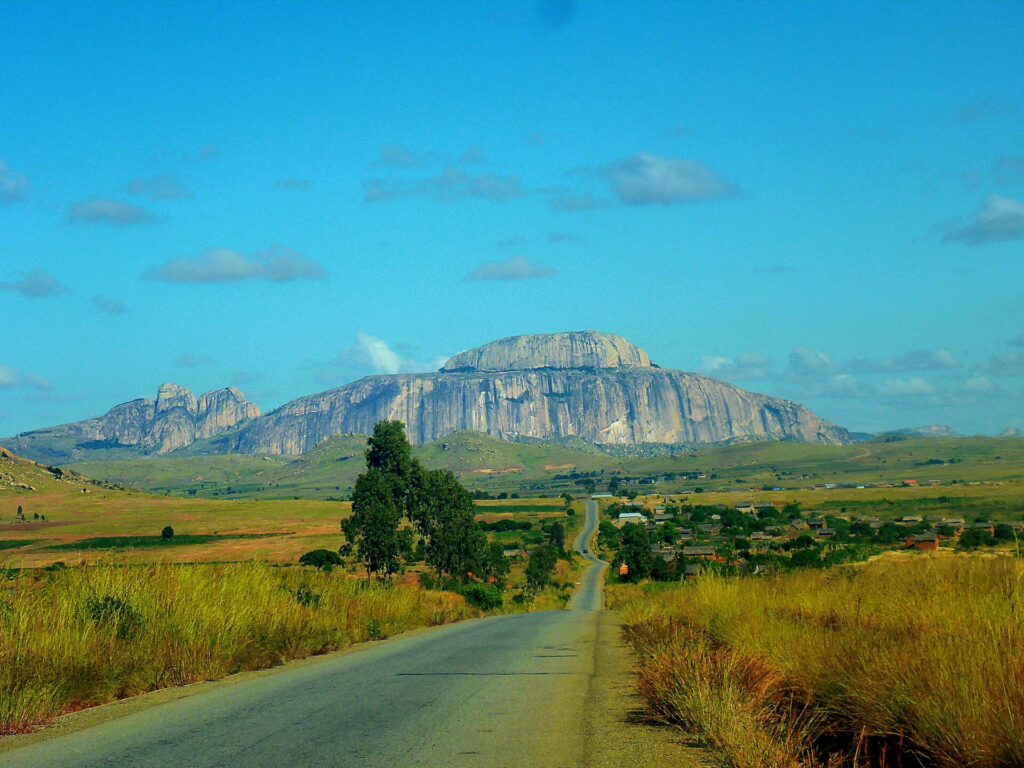
Best Time to visit Isalo National Park
For maximum visibility and clear skies, visiting during the dry season is recommended. Between April to October, the landscape is lush, green, and full of animals. Temperatures are warm but not overbearing.
Cyclone season occurs during January to March. This can cause significant flooding and damage to the parks. Roads can become extremely muddy or fully submerged underwater. It’s not recommended to visit Madagascar during this period.
I hiked through Isalo during the month of April. The temperatures were warm but manageable throughout the day. At night, a light sweater or jacket would be sufficient.
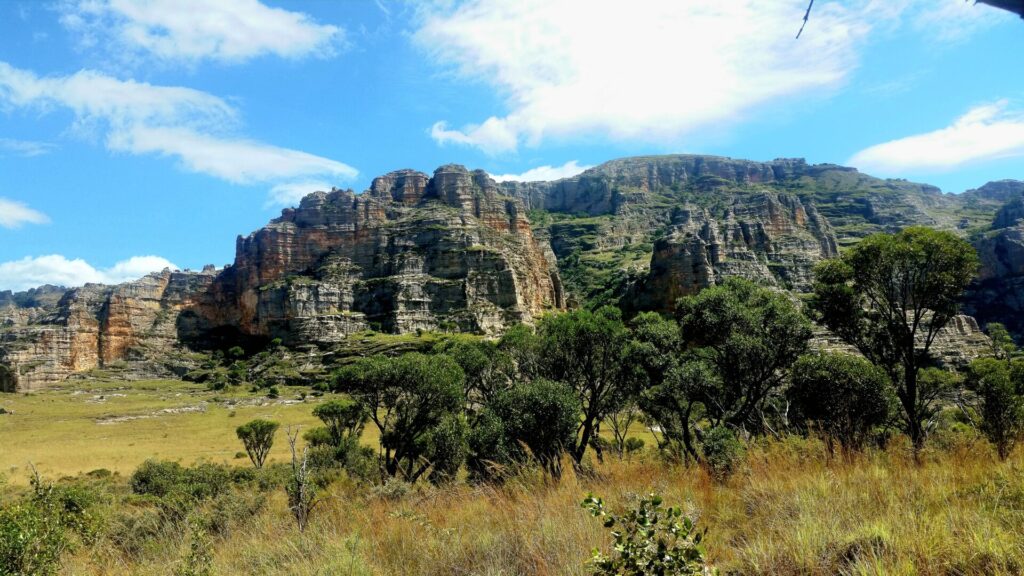
Local Guides and Tours
While you may be able to independently get around Madagascar, visitors are not allowed to explore the national parks on their own. Guides, tours, and porters must be hired to visit any park in Madagascar. This can be done ahead of time or at the park entrance.
Madagascar is not an easy country to navigate independently, so I would highly recommend using a tour company or local guide to show you around. They can handle all the logistics, from transport, food, water, guides, and accommodations.
I used Madagascar Mosaic for a two-week hiking excursion through Madagascar and Isalo.
Momo Trekking is also highly rated and can arrange for camping and guides throughout Isalo National Park.
Getting to Isalo National Park
Isalo is in the south of Madagascar, approximately 700km from the capital city of Antananarivo. There is no simple or easy way to reach this park, as the journey is typically divided into two to three days.
Most international flights fly into Ivato International Airport (TNR), located in the capital city. From here, visitors proceed south down the RN7 highway towards Ranohira.
While 700km doesn’t seem like it would take the entire day, roads in Madagascar are normally undeveloped. The RN7 highway is in good condition and runs from north to south of the island but will take several days to reach Isalo. It’s not recommended to drive at night, so plan the trip accordingly. Road closures are common and can happen without warning.
I came from Andringitra National Park, which is around a 3-hour drive to Isalo. Ambalavao or Ranomafana are also goods stopping areas to reach this national park.
Alternatively, you can take a connecting flight from Ivato to Toliara Airport. The drive from the airport is around 240km or 4-5 hours. Internal flights in Madagascar are quite expensive and can sometimes be unreliable, cancelling with short notice.
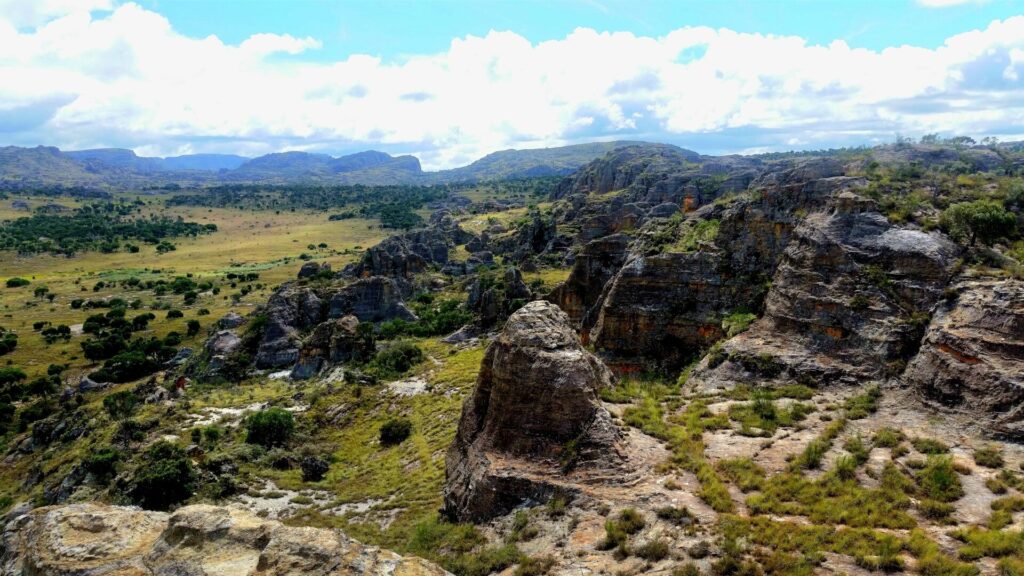
Where to stay in Isalo National Park
There are two main campsites located in Isalo National Park: Namaza and Analatapia. Each site comes with shared flush toilets, showers, and BBQ facilities. Typically, if you are staying the night, your tour operator or guide will arrange for a tent, food, and water.
There is a third camp just outside the perimeter of Isalo. This camp is privately owned and located near Rats Canyon. This camp has a squat toilet, BBQ area, but unfortunately no showers. There is water, so it can be heated for a quick wash if needed.
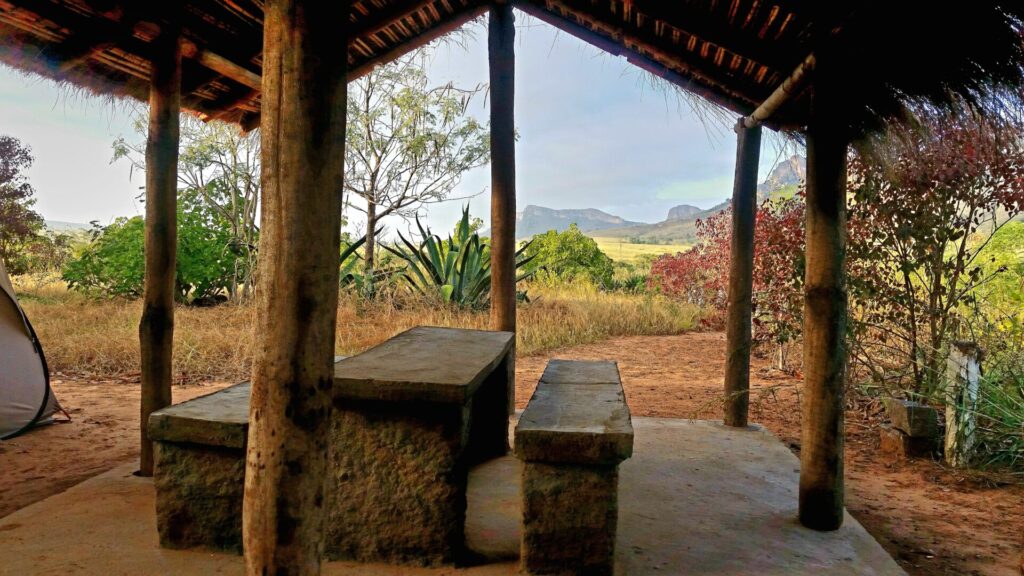
I stayed at both the private camp and Namaza. Namaza is deeper in the canyon, so expect it to be a little bit chillier at night. The flush toilets and showers are a nice touch. This campsite attracts visitors during the day, as it’s a great area to watch brown lemurs as well.
If you would prefer not to camp and are simply visiting Isalo on a day trip, there are a couple accommodations to choose from in and around Ranohira:
At the end of my stay in Isalo, I stayed at Isalo Ranch. This beautiful eco-lodge starts at 40€/night and uses solar energy to power the bungalows.
How Long do you need to spend in Isalo?
Whether you have one day or 4 days, Isalo has plenty to offer for hiking in terms of hiking. Most people who join a tour typically spend one day in Isalo. While you can definitely get your fill of the national park in a single day, I would suggest staying two days, and venturing higher into the plateau. I spent 3 days hiking through Isalo, and it was more than sufficient
Popular Hiking Routes in Isalo National Parks
There are several hiking trails throughout Isalo National Park. Trails vary from a few hours to a few days. Below are some of the more popular routes throughout the park.
Rats Canyons
- Distance: 6.5km
- Difficulty: Easy
This short route takes around 2-3 hours and is a great introduction to the unique canyons of Isalo. The vertical walls are covered in greenery and vines. The sandstone canyon walls are massive, towering 100s of meters high. Small waterfalls can be seen throughout the canyons, with crystal clear pools scattered throughout.
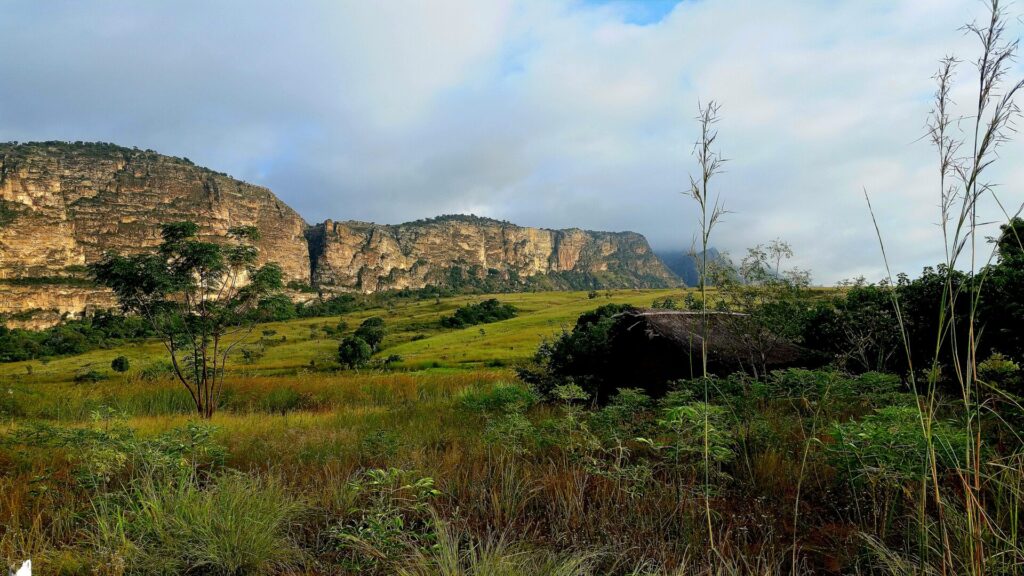
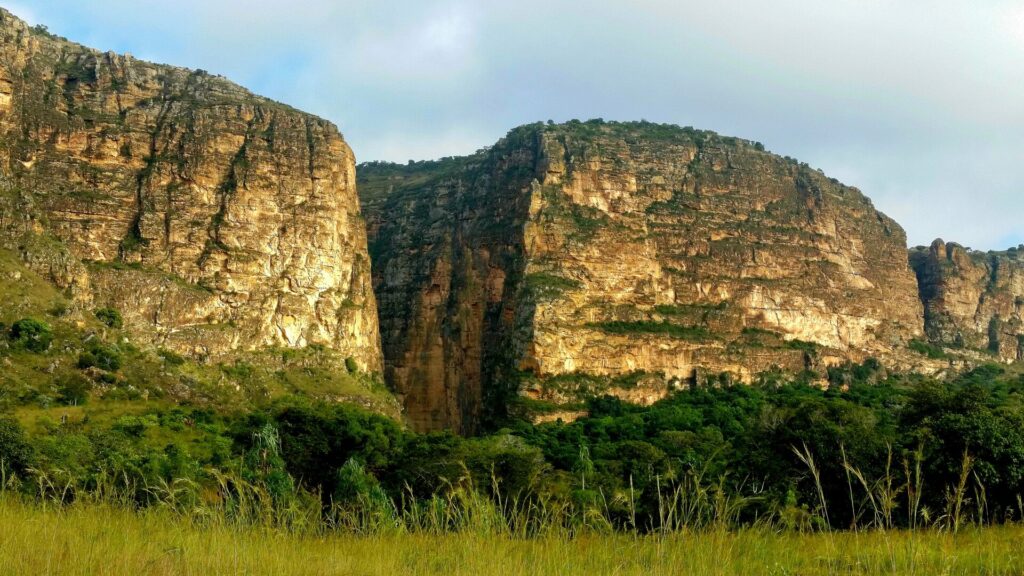
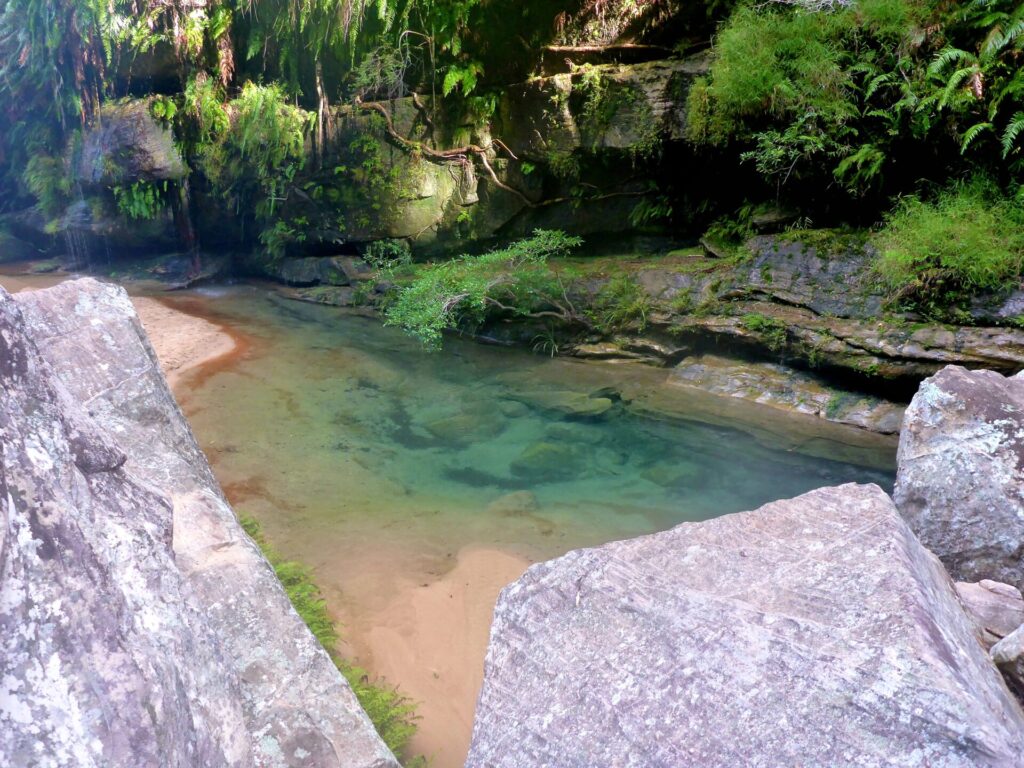
If you visit just after the rainy season, expect these canyons to be filled with streams. I would suggest ditching the hiking boots and use sandals instead. The walk will be quite wet and sandy.
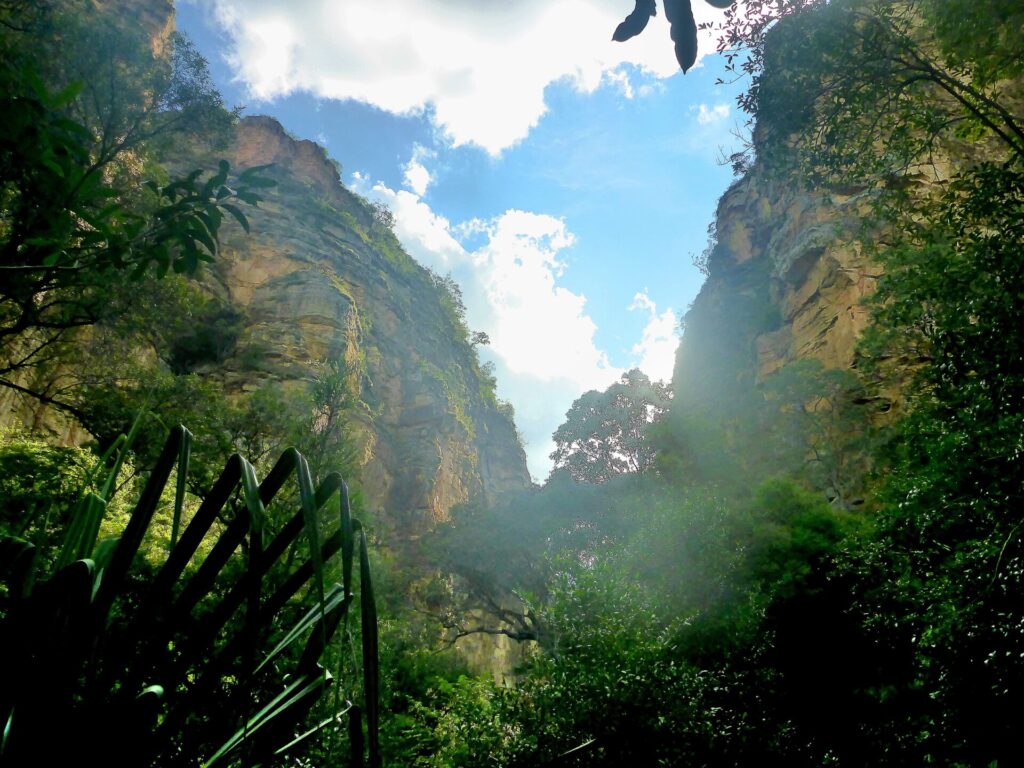
Massif of Isalo/ Black and Blue Pools/Waterfall of the Nymphs
- Distance: 10-15km
- Difficulty: Moderate
The beginning of this hike is more secluded and doesn’t attract as many day visitors. The climb is steady but provides excellent views of the surrounding flat terrain. Hike through the sandstone massif of Isalo, weaving further into the rocky terrain.
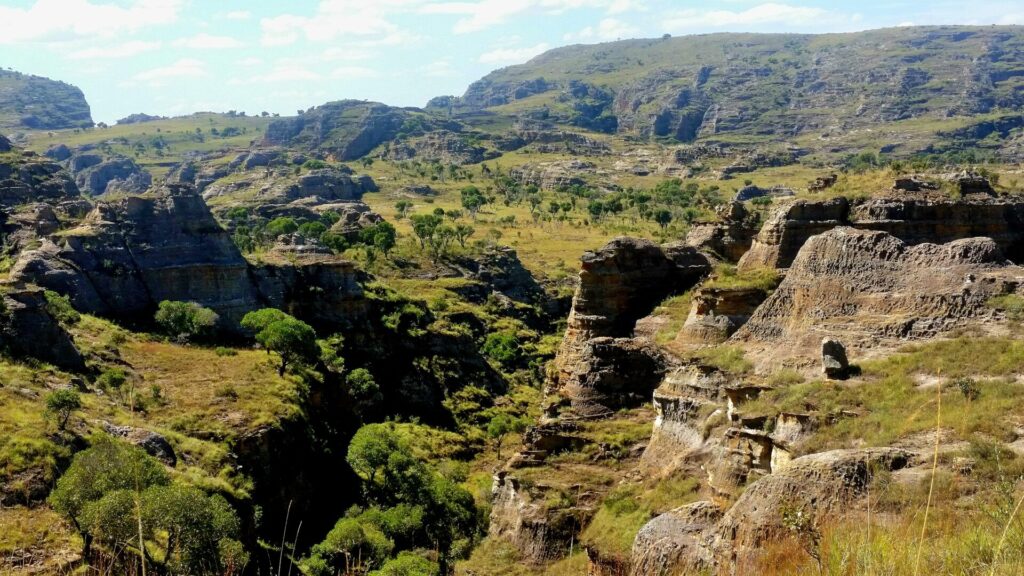
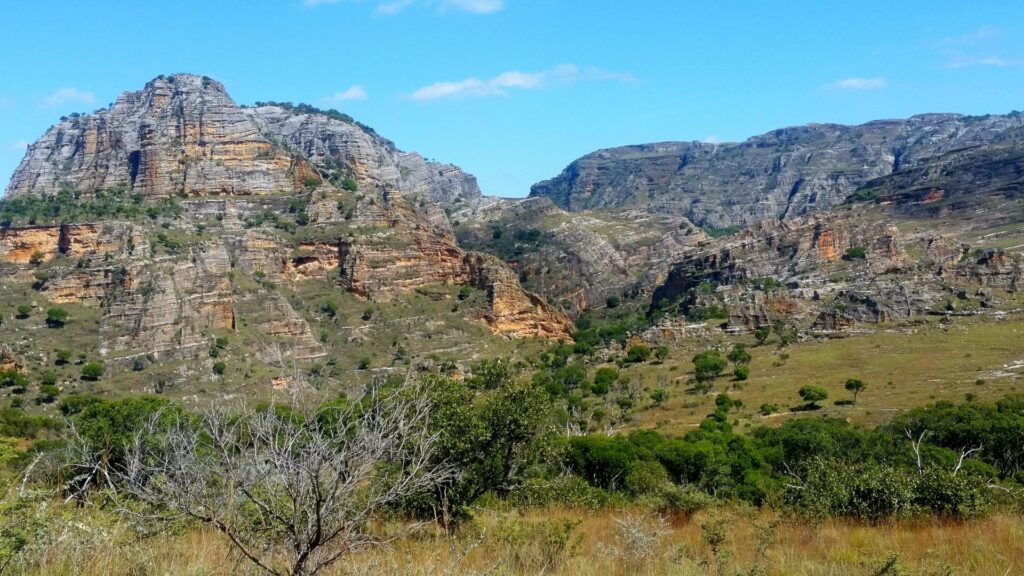
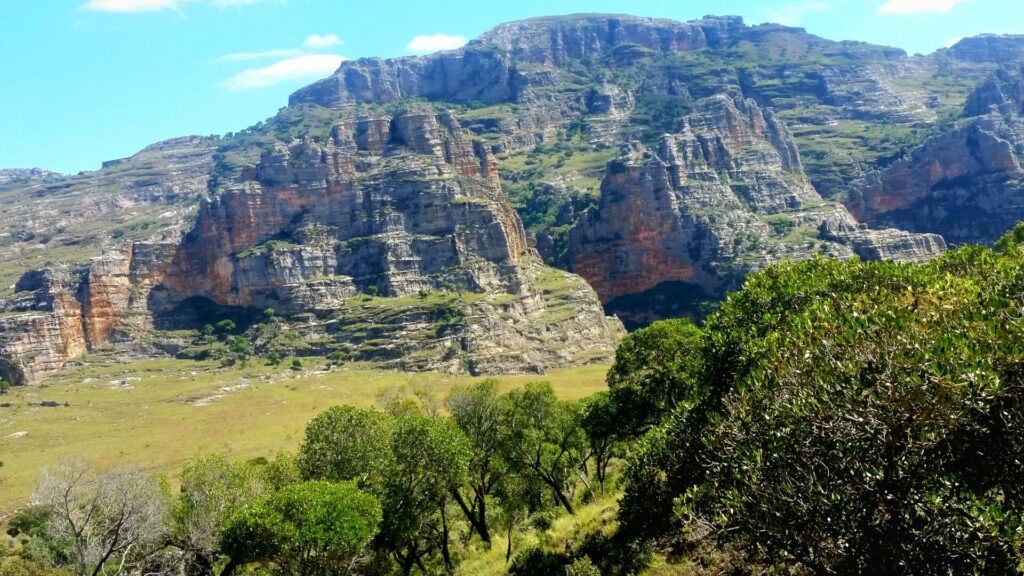
This was my favourite hike in Isalo by far. My guide took me around for 7 hours around the plateau, educating me on the flora and fauna of the area.
Leaving the plateau, the trail will lead down through the canyon, towards the ever popular “Blue and Black Pools”. These natural pools are stunning. As the name suggests, one pool is blue, while the other spears to be a darker black/orange colour. This is the most popular site at Isalo.
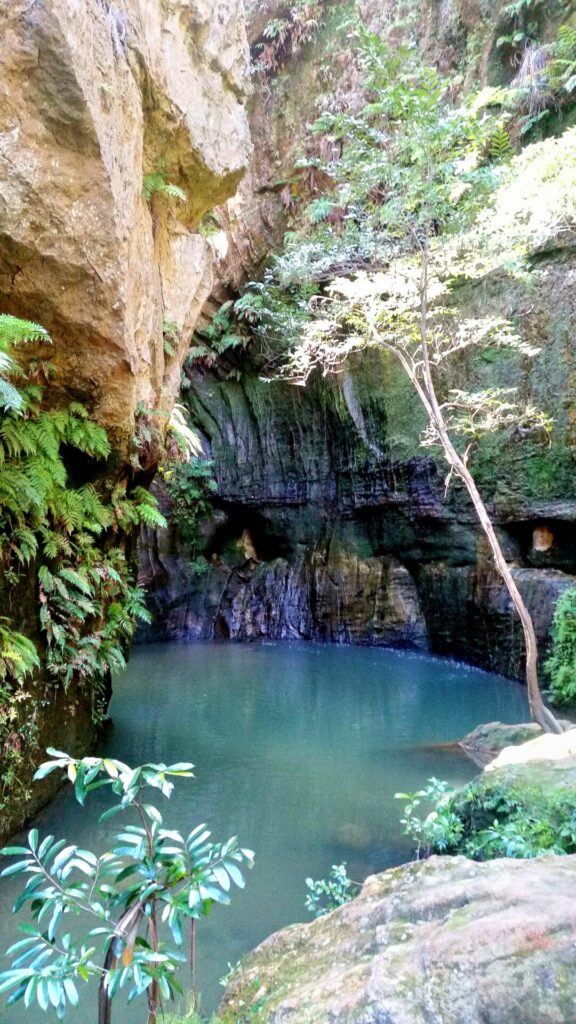
Further along, the Cascades des Nymphes is another popular swimming area. This secluded little piece of paradise is worth a swim.
Namaza/Piscine Naturelle (Natural Swimming Pool)
- Distance: 7-10km
- Difficulty: Easy/Moderate
From Namaza campground, head up the sandstone cliffs once more towards the Piscine Naturelle. This is the second most popular walk. The trail continues along the plateau and rocky terrain. If you are lucky, you may encounter scorpions, lizards, and chameleons along the way.
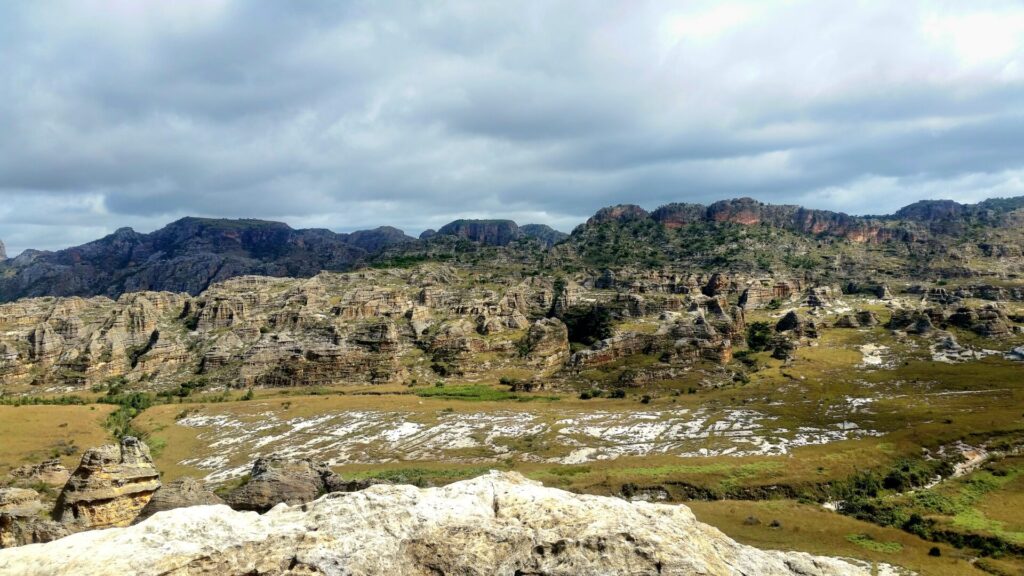
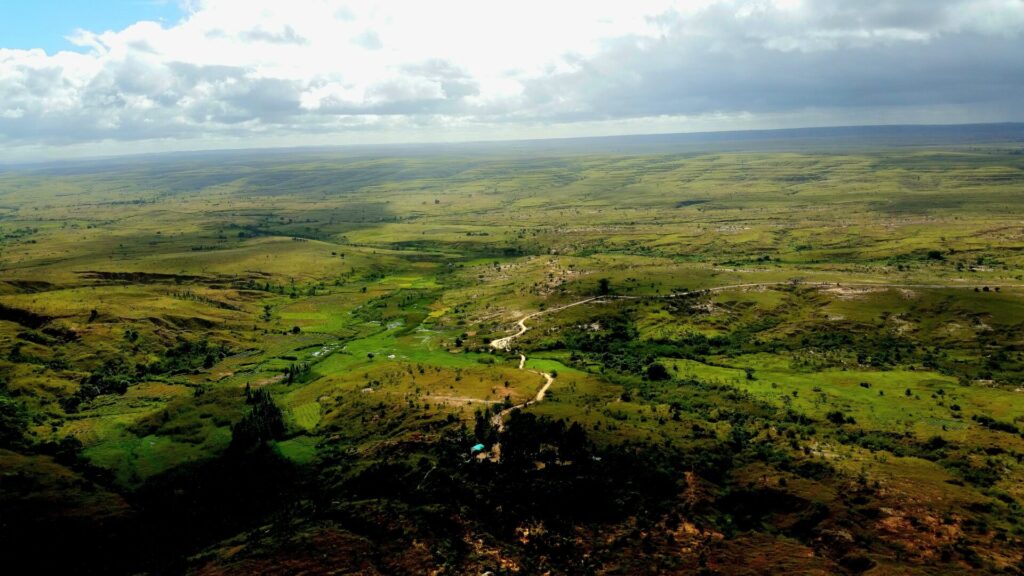
As you near the Piscine Naturelle, the landscape changes from dry and arid, to tropical. This little oasis is a refreshing opportunity to cool off after a long walk.
The Analatapia camp site is located close to the pools, providing easy access for those staying nearby.
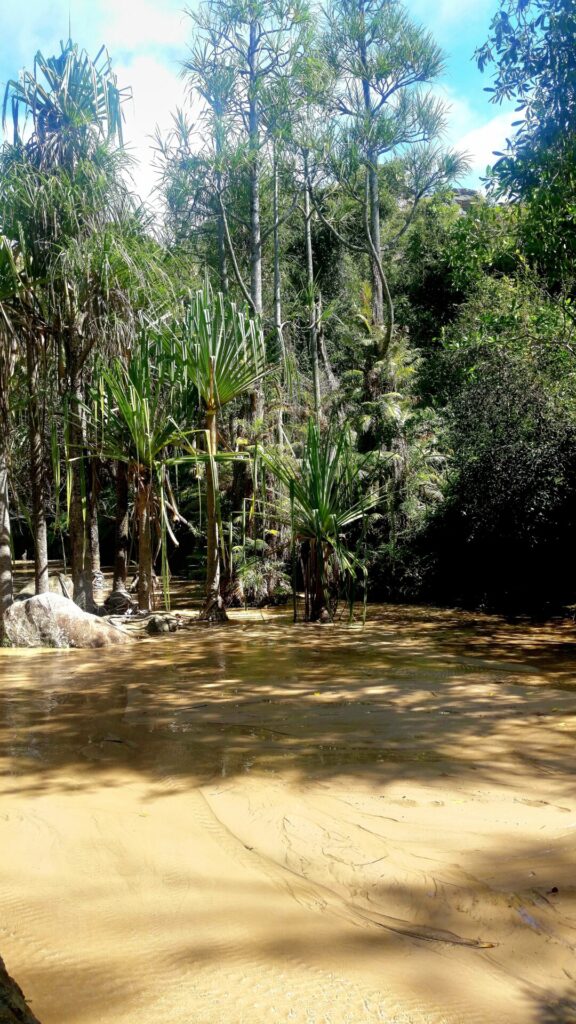
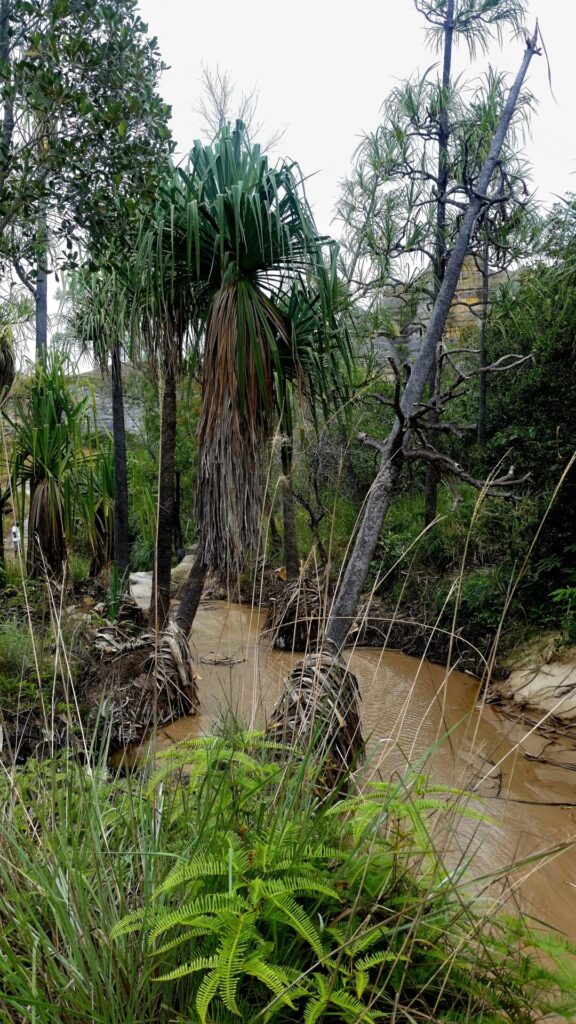
Further Exploring in Madagascar
Andringitra National Park is by far the most spectacular park in Madagascar, especially for those wanting to get off the beaten path and hike. The hike to the second tallest mountain in Madagascar (Pic Boby) is sure to get your heart pumping.
Challenging yourself with a three-day, 4-night excursion through thick forests, barren plateaus and moon like landscapes!
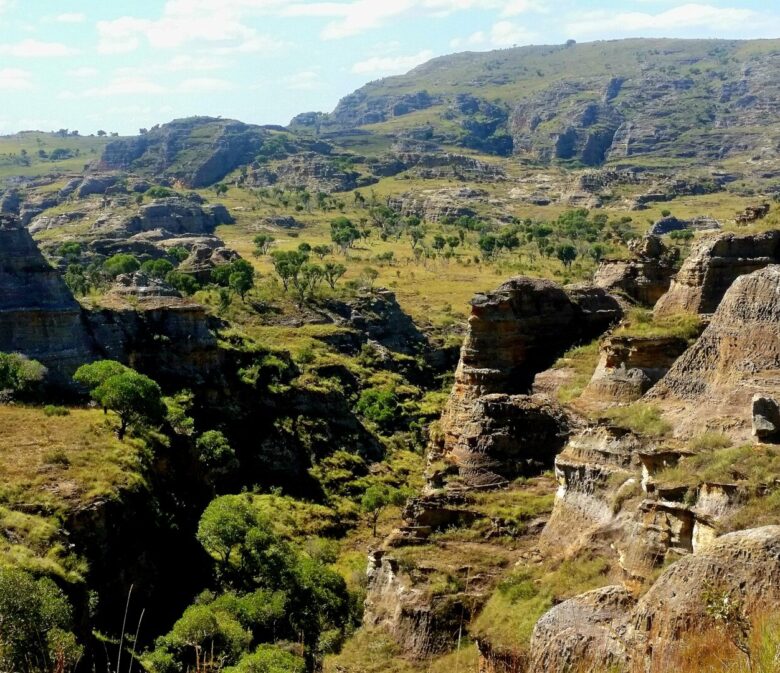
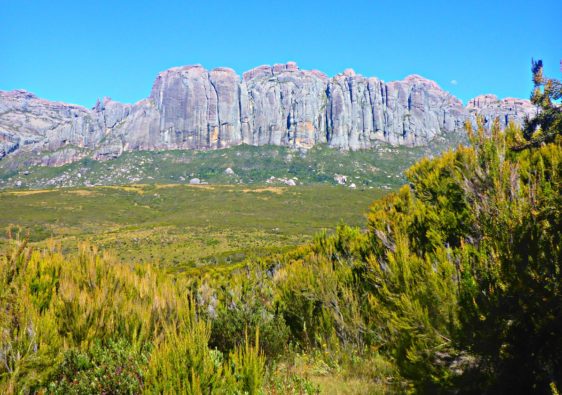
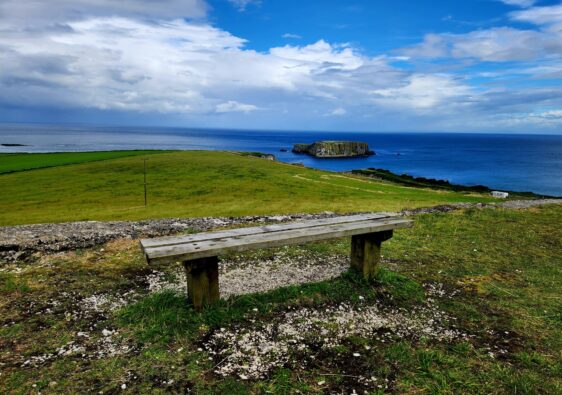
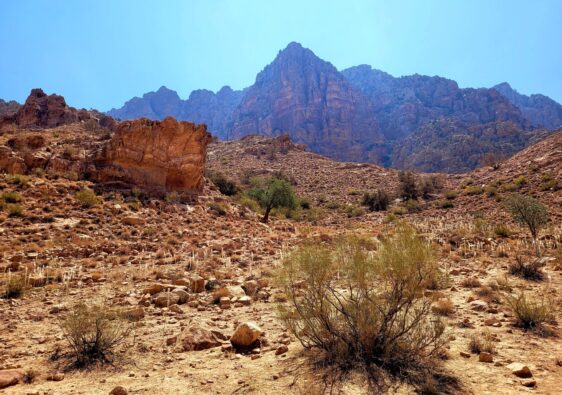
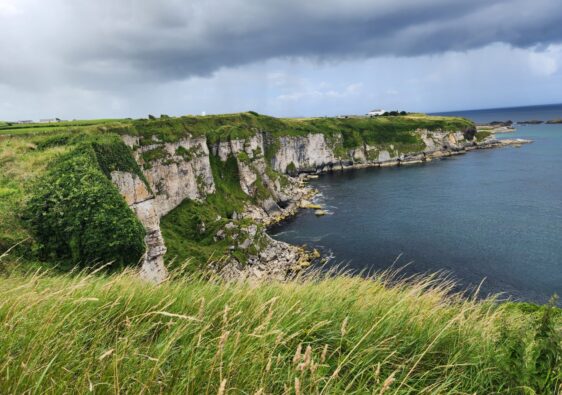
Oh my goodness! What a beautiful hike! I would love to visit Madagascar one day, and do this hike, especially for those views.
What a lovely hike that is. I like the way you have put map guides here.
I would love to see Lemurs in the wild, what an incredible national park to visit. I found the detailed hiking maps very useful thanks for sharing!
I would definitely hike to the Black & Blue Falls. It looks stunning. Your photography is incredible of the dense forest and vegetation.
I love your photos and the water is so clear. I also love how your put the AllTrails map for hiking novices like me.
Thank you. I get lost very easily and I find these maps help alot.
I’d love to hike here! Seeing the Blue and Black pools would be right up my alley; I understand why it’s so popular.
Such wonderful views! Madagascar is high on my list and this hike would be a perfect thing to do!
[…] Build & Board Travel […]
[…] Build & Board Travel […]